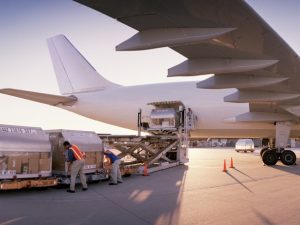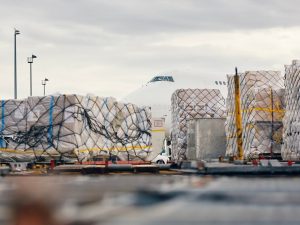Glasgow Prestwick Airport is planning to expand its cargo operations in India in response to growing demand for Scottish salmon and whisky, Nico Le Roux, Business Development Director, PIK, said, while addressing delegates at the Air Cargo Southeast Asia Expo, Singapore. The development builds on the progress of the United Kingdom–India FTA, which will remove tariffs on Scottish salmon and reduce duties on Scotch whisky from 150 per cent to 75 per cent, with further cuts expected. “The Indian subcontinent, on the back of the recent Indo-Anglo trade agreement, is a key target for Glasgow Prestwick Airport for 2026,” said Nico Le Roux. “Scotland’s national export ambitions to India are well defined and Prestwick will provide an unrivalled European gateway for India’s pharma, medical equipment, and garment industries. “We are looking to mirror the collaborations we created with Chinese carriers and are seeking out full freighter airline partners to serve the Indian market. Expanding our connections with India will ensure faster, more efficient routes for Scotland’s key products to reach one of the world’s fastest-growing markets, while offering Indian manufacturers a superb hub in Europe,” added Le Roux.
Read More »‘One Airport, One Product’ to transform India’s cargo ops
Minister of Civil Aviation Kinjarapu Ram Mohan Naidu highlighted India’s immense market potential, skilled manpower and rapidly expanding cargo sector, while addressing the 11th Global Aviation Air Cargo Conclave, themed “Gateway to the Skies: Elevating India’s aviation, air cargo and MRO ecosystem for global leadership”. He said India’s air cargo volumes have grown by 47 per cent over the last decade, positioning the country 6th globally in total air cargo volumes, 3rd in domestic freight, and 12th in international freight. With cargo-handling capacity now at 8 million MT and growing at over 10 per cent annually, India has set ambitious targets to reach 10 MMT by 2030 and 21 MMT by 2047. The Minister emphasised major initiatives, including the PMGS scheme, NLP, and creation of a unified national market through GST, have been critical enablers of this progress. With India currently accounting for only 2.9 per cent of global air traffic, he underlined the vast untapped potential ahead. He shared initiatives such as transforming airports into cargo hubs for local production, promoting regional exports, such as frozen fish from Agartala and tea from Dibrugarh, and operationalising the ‘one airport, one product’ concept inspired by the PM’s ‘one district, one product’ vision.
Read More »SpiceXpress wins Best Airline & LSP Award
SpiceXpress & Logistics was presented with the Best Airline and Logistics Service Provider Award recently at the India Cargo Awards 2025, recognising its exceptional performance and consistent commitment to excellence in the air-cargo and logistics sector. The accolade highlights the company’s advances in operational efficiency, customer-centric solutions, and innovative service offerings, further strengthening its position as one of the leading logistics players in the country.
Read More »‘Global conflicts disrupted supply chains, increased costs’
Keku Bomi Gazder, MD and CEO, Aviapro Logistic Services said, “Geopolitical events, regulatory changes, and shifting trade patterns have had a significant impact on our business operations. Global conflicts and regional tensions disrupted supply chains, increased transportation costs, and led to fluctuations in fuel prices, affecting logistics planning and profitability.” Evolving trade policies, such as changes in import-export regulations and tariff structures, have required constant monitoring and adaptation to ensure compliance and cost efficiency. “Also, the focus on sustainability and stricter environmental regulations have prompted investments in greener technologies and more transparent supply chain practices. Trade realignments and diversification of sourcing markets have encouraged us to strengthen partnerships in emerging regions to mitigate risks,” he added
Read More »Global cargo ops resume at Visakhapatnam Airport
International air cargo operations resumed to Visakhapatnam Airport after a halt that had remained in place since the pandemic. Union Civil Aviation Minister K. Ram Mohan Naidu announced the resumption, while addressing the 30th CII Partnership Summit recently. K. Kumar Raja, D.S. Varma, and O. Naresh Kumar, Members of the Andhra Pradesh Air Travellers Association (APATA) said the move will come as relief to exporters across the region. For the past few years, companies in sectors such as pharma, medical devices, textiles, and other manufacturing units located in the Pharma SEZ, AP MedTech Zone, Textile Park, and the Visakhapatnam SEZ had no option but to ship their cargo through Hyderabad or Chennai. This workaround increased transport costs and stretched delivery timelines, affecting competitiveness.
Read More »October cargo volumes up 4% YOY: Xeneta
Global air cargo volumes growth slowed down in October but still recorded a stronger than expected 4 per cent rise year-on-year, despite the easing of frontloading of imports by businesses countering the cost of tariffs and effects of the US de minimis ban, Niall van de Wouw, Chief Airfreight Officer, Xeneta. The latest monthly data supports its forecast in September of an overall 3–4 per cent growth in demand for 2025, but more worrying trends indicate challenging times ahead for airlines and forwarders as the market is “starting to favour shippers more than it has for the past few years,” he said. October saw a sixth consecutive monthly fall in global air cargo spot rates, with a 3 per cent decline year-on-year to US$ 2.58 per kg. Seasonal contract rates, valid for over a month, fell even faster than spot prices. Averaging US$ 2.31 per kg, they were down 8 per cent year-on-year, reflecting a subdued outlook among forwarders and carriers.
Read More »Personalisation & sustainability to be major trends next year’
Dilip Sahu, Director, EPS Worldwide Integrated Logistics said, “I’m betting on authenticity, personalisation and sustainability as the dominant trends of 2026. Consumers are moving away from polished, generic messaging and toward brands that align with their values and deliver meaningful, tailored experiences. We’re investing in tools that enhance real-time personalisation and storytelling backed by data transparency.”
Read More »‘2026 will be the year of AI, predictive intelligence and sustainability’
Amit Maheshwari, Founder and CEO, Softlink Global said, “I see 2026 as the year of intelligent logistics ecosystems. AI will move beyond dashboards to decision-making—creating digital co-workers that can act autonomously. Secure data exchange between systems and stakeholders through blockchain and APIs will become mainstream. Finally, a growing focus on compliance, sustainability, and predictive intelligence will define how forwarders operate—and differentiate — globally.”
Read More »‘ Focusing on enhancing visibility and collaboration’
Afzal Malbarwala, MD and Founder, Galaxy Freight, said, “It is AI, Big Data, cybersecurity, and sustainability that firms talk about — and rightly so. But if you look closely, these trends boil down to one core principle: visibility and transparency. When every stakeholder in the supply chain operates with openness and integration, processes run smoother, efficiency improves, and both e-waste and physical waste are reduced. Add in stronger data security, and you gain a clear competitive edge. Our focus is not just on the latest devices or technologies — it is on mechanisms that truly enhance visibility, accountability, and seamless collaboration across the chain. That is where the real advantage lies.”
Read More »‘2026 will belong to those who act fast, stay data-smart & embrace collaboration’
Abhishek Goyal, CEO & Executive Director, Aeroprime Group said, “India’s emergence as the world’s fifth-largest economy and its trajectory toward becoming the third-largest aviation market present unprecedented opportunities for growth and connectivity. These shifts are reshaping how airlines plan networks, manage capacity, and engage with travelers across diverse geographies. For us, 2026 will be about deepening our global presence to build resilience against geopolitical and market uncertainties, ensuring we can serve our partners more robustly across regions. On the cargo side, connected intelligence, automation, and real-time visibility will remain key drivers, helping create agile, insight-led operations. GSA and GSSA partners will continue to play a crucial role in this evolving landscape, acting as strategic enablers for airlines navigating complex or emerging markets where local expertise, data-driven insights, and established relationships are vital. The next wave of aviation will belong to those who act fast, stay data-smart, and embrace collaboration to build a more connected, adaptable, and future-ready global aviation network.”
Read More » Cargo Breaking News
Cargo Breaking News









